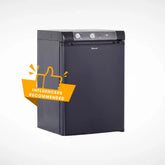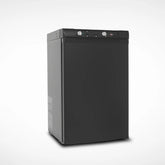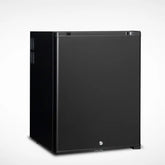What is the principle of a microwave oven and how does it work?

When the microwave oven became so popular in the 1970s, it brought a new level of convenience to the home. While a conventional oven heats food very slowly from the outside in, a microwave oven uses small but powerful radio waves to cook food more evenly. This is why a microwave oven can cook a piece of meat about six times faster than a conventional oven. Microwaves also save feed because you can cook immediately without having to wait for the oven to reach a high temperature.
一、how does the microwave oven work?
- Inside the sturdy metal box is a microwave generator called a magnetron. When cooking begins, the magnetron takes power from an electrical outlet and converts it into 12 cm (4.7") high-powered radio waves.
- The magnetron blows these waves into the food chamber through a channel called a waveguide.
- The food is placed on a turntable and slowly rotated so that the microwaves cook the food evenly.
- The microwaves bounce off the reflective metal walls of the food compartment, just as light bounces off a mirror. When microwaves reach the food, they do not simply bounce back. Just as radio waves can pass through the walls of your home, microwaves can also penetrate the inside of food. As they pass through, they cause the molecules inside to vibrate faster.
- Vibrating molecules have heat, so the faster they vibrate, the hotter the food gets. Thus, microwaves transfer their energy to the food molecules, causing them to heat up rapidly.
二、Is oven microwave safe?
When used according to the manufacturer's instructions, microwave ovens are safe and convenient for heating and cooking a variety of foods. However, a number of precautions must be taken to potential microwave exposure, thermal burns, and food handling.
Microwave safety: The design of microwave ovens ensures that microwaves are contained within the oven and can only be present when the oven is on and the door is closed. Leakage around and through the glass door is limited by design to a level well below that recommended by international standards. However, microwave leakage can occur around damaged, dirty or modified microwave ovens. It is therefore important that the oven is kept in good condition. Users should check that the door closes properly and that the safety latches, fitted to the door to prevent microwaves being generated while it is open, are working properly. Door seals should be kept clean and there should be no visible signs of damage to the seals or the outer shell of the oven. If any fault is found or any part of the oven is damaged, it should not be used until it has been repaired by a qualified service technician.
Microwave energy can be absorbed by the body and produce heat in exposed tissues. Organs with poor blood supply and temperature control, such as the eyes, or temperature sensitive tissues, such as the testicles, are at greater risk of thermal damage. However, thermal damage would only occur from prolonged exposure to very high power levels, much higher than those measured around microwave ovens.

Thermal Safety: Burns can occur from handling hot objects heated in a microwave oven in the same way as objects heated with conventional ovens or cooking surfaces. However, heating food in a microwave oven has some peculiarities. Boiling water on a conventional stove allows steam to escape through the action of the bubbler when the water starts to boil. In a microwave oven there may be no bubbles on the walls of the container and the water overheats and may boil suddenly. This sudden boiling can be caused by a single bubble in the liquid or by the introduction of a foreign object, such as a spoon. People have been severely burned by overheated water.
Another peculiarity of microwave cooking is related to the thermal response of certain foods. Some items with non-porous surfaces (e.g., hot dogs) or composed of materials that heat at different rates (e.g., egg yolks and whites) heat unevenly and can explode. This can occur if eggs or nuts are cooked in their shells.
Food safety: Food safety is an important health issue. In a microwave oven, the heating rate depends on the power of the oven and the water content, density, and amount of food to be heated. Microwave energy does not penetrate well into thicker foods and can result in uneven cooking. This can pose a health risk if parts of the food are not heated enough to kill potentially dangerous microorganisms. Because of the possibility of uneven cooking distribution, foods heated in a microwave oven should rest for several minutes after cooking to allow the heat to distribute throughout the food.
Food cooked in a microwave oven is just as safe, and has the same nutritional value, as food cooked in a conventional oven. The main difference between these two cooking methods is that microwave energy penetrates more deeply into the food and reduces the time it takes for heat to be conducted throughout the food, thus reducing total cooking time.
Only some microwave ovens are designed to sterilize items (e.g. baby bottles). The user should follow the manufacturer's instructions for this type of application.

Misconceptions: To dispel some misconceptions, it is important to know that food cooked in a microwave oven does not become "radioactive". There is also no microwave energy left in the cavity or in the food after the microwave oven is turned off. In this sense, microwaves act like light; when the lamp is turned off, there is no more light.
Featured Products
SMAD 1.4 cu.ft Mini Gas Propane Refrigerator, 3-WAY Small Portable Camper Fridge
- $377.08
$427.90- $377.08
- Unit price
- / per
SMAD 2.1 cu.ft (60 liter) 3 Way Propane Camper Fridge for Travel, Quiet Refrigerator without Freezer
- from $449.88
$504.90- from $449.88
- Unit price
- / per
SMAD 3.5 cu.ft Propane Refrigerator with Freezer, 3 Way Gas Fridge Freezer
- $1,103.08
$1,274.90- $1,103.08
- Unit price
- / per
SMAD 6.1 Cu.ft Propane Refrigerator with Top Freezer, Off-Grid Camper Gas Fridge
- $1,508.00
$1,686.00- $1,508.00
- Unit price
- / per
SMAD 2.4 Cu.Ft Propane Gas/110V/12V Chest Freezer for Camping,Off-grid Cabin Freezer
- $909.08
$1,065.90- $909.08
- Unit price
- / per
SMAD 1.4 cu.ft Quiet 12V Absorption Cooling Portable Fridge with Lock for Camper and Travel
- $311.88
$350.90- $311.88
- Unit price
- / per
SMAD 2.1 cu.ft Silent Absorption Refrigerator with Lock, 12V Outdoor Camper Refrigerator
- $367.08
$416.90- $367.08
- Unit price
- / per
SMAD 3.0 Cu.Ft (85L) RV Refrigerator with mini top freezer, 12V/24V DC Travel and Camper Fridge
- $643.08
$699.00- $643.08
- Unit price
- / per















